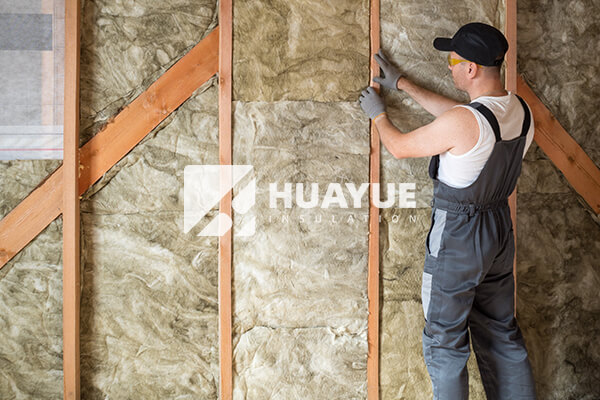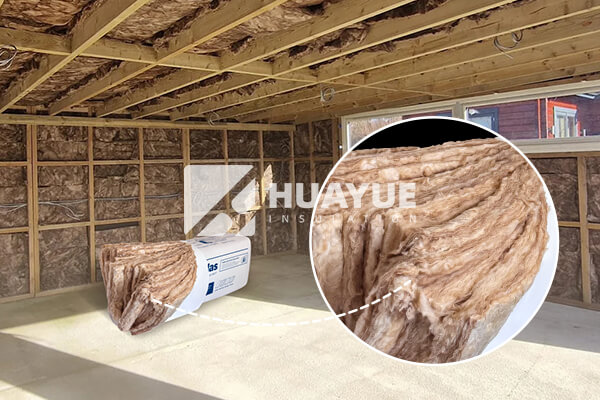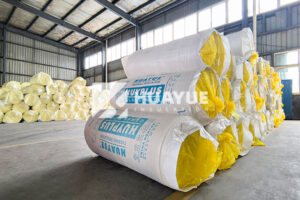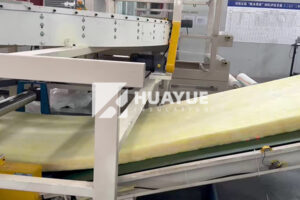Best Fiberglass Insulation for Basement Walls: Which Options Offer Real Performance?
If you are dealing with cold, damp basement walls, choosing the right insulation can feel frustrating. The wrong product could waste money and create bigger problems later.
The best fiberglass insulation for basement walls combines moisture resistance, ease of installation, and a suitable R-value for your climate zone. Use unfaced or vapor-retarder fiberglass batts for simple retrofit projects and consider rigid fiberglass panels for higher efficiency.

Many homeowners are searching for the right material for basement walls. The sheer number of insulation options, confusing claims, and local codes can make it hard to decide. When I started upgrading my own basement, I looked closely at fiberglass insulation. I had to make sure the product could handle moisture, provide the right R-value, and last for years without failing. Keep reading if you want a detailed breakdown.
Which insulation is best for basement walls?
Battle temperature swings and avoid mold in your basement by picking insulation carefully. Some types just work better in the unique conditions found below grade.
The best insulation for basement walls depends on moisture control, heat resistance, and local code requirements. In most cases, rigid foam, fiberglass batts, or mineral wool work, but fiberglass is used for its cost, ease, and moderate performance.

When I compared different insulation types, I knew I wanted to maximize performance without spending a fortune. Fiberglass batts remain popular because they are affordable, widely available, and easy to install between stud framing. For a semi-finished basement, unfaced batts let moisture escape, cutting down on mold risk. Vapor-retarder batts add extra protection in wetter areas. Some contractors steer homeowners to rigid foam or mineral wool, citing better moisture resistance and air sealing, but these come with higher costs and tougher installation. I had to factor in budget, climate, and whether I wanted to finish the walls with drywall.
To make things clearer, here’s a table summarizing the main insulation choices:
| Insulation Type | Moisture Resistance | Cost | Ease of Install | Common R-value (per inch) |
|---|---|---|---|---|
| Fiberglass Batts | Moderate | Low | Easy | 3.1–3.4 |
| Rigid Foam Board | High | Moderate–High | Moderate–Hard | 4.0–6.0 |
| Mineral Wool Batts | High | Moderate | Easy | 3.7–4.2 |
In new builds or full gut jobs, some will combine rigid foam for the exterior wall and fiberglass for the interior. This approach is expensive but provides top protection. For many homeowners, fiberglass batts offer a solid choice to insulate stud walls for moderate improvement in comfort and energy efficiency.
What should the R-value be for basement walls?
Struggling with high heating bills or cold floors? Picking the wrong R-value leaves your basement chilly or damp. R-value measures how well insulation blocks heat; you need the right level for your local climate.
Basement walls in colder climates typically need an R-value between R-10 and R-21, according to building codes. Use fiberglass batts rated to match your zone, and check with local regulations for exact requirements.

When I shopped for insulation, I realized R-value was the key number I had to get right. In my area, minimum R-values ranged from R-10 for basic improvements to R-15 or R-19 for finished living spaces. Most fiberglass batts are labeled with R-values ranging from R-11 to R-21 for standard wall cavities. To maximize energy savings, you should aim for as high an R-value as your budget and wall depth allow. If you want warmer floors and less mold, make sure you combine proper insulation with good air sealing.
Here’s a chart with recommended R-values by climate zone, using US Department of Energy guidelines:
| Climate Zone | Recommended Basement Wall R-value |
|---|---|
| Mild (Southern US) | R-10 to R-13 |
| Cold (Northern US) | R-13 to R-15 |
| Very Cold (Canada +) | R-15 to R-21 |
Always check your local codes before choosing insulation. Many regions now require vapor-retarder insulation to be used in below-grade walls, which means you should select batts with built-in membranes or apply a vapor barrier separately.
Is fiberglass insulation good for basement walls?
Moisture and mold are real threats below ground. Many buyers wonder if fiberglass insulation will help, or if it just creates more problems.
Fiberglass insulation is a good choice for basement walls when installed properly with vapor control and moisture management. Use unfaced batts for drier basements, and vapor-retarder batts or encapsulated fiberglass in damper areas.
Installing fiberglass batts is a job many homeowners can do on their own. You just need to fit the batts between wood or metal studs, making sure you fill the space without leaving gaps or compressing the material. In drier basements, unfaced fiberglass allows walls to breathe and vent any vapor that gets in. If your basement is damp or prone to leaks, always test for moisture issues first; if needed, use vapor-retarder batts with an attached membrane on the warm side of the wall. Encapsulated fiberglass batts are another solution, featuring a plastic or foil wrap for added water resistance.
Some experts warn that fiberglass can trap moisture if the wall surface is not properly sealed or the basement is humid. I found that regular monitoring and good vapor barriers solve most problems. I always recommend checking humidity and fixing any water leaks before installing any insulation. For basements with chronic water intrusion, rigid foam boards may be a safer bet.
How long does fiberglass insulation last in walls?
Worried about spending money on insulation that fails before you get your value out of it? Durability is a big deal for basements that see tough conditions.
Fiberglass insulation generally lasts 20 to 40 years in walls if protected from moisture and not physically damaged. Proper installation, vapor control, and regular inspections prevent sagging, mold, and loss of effectiveness.
Durability became a top concern when I started my basement project. Fiberglass insulation does not rot or attract pests. If kept dry, it can function for decades. Over time, insulation may settle or compress, which lowers its performance, but this usually happens faster if there are leaks, excessive humidity, or pests. I read that some homeowners found insulation still working nearly 40 years after it was installed. Factors like steam leaks, wall movement, or poor ventilation can shorten its lifespan. I always advise periodic checks for sagging, water stains, or odd smells—and replacing insulation if necessary. Compared to materials like cellulose or foam, fiberglass still stands out for affordable durability.
Here’s a quick table for expected insulation lifespans:
| Insulation Material | Expected Lifespan (years) | Key Maintenance Needs |
|---|---|---|
| Fiberglass Batts | 20–40 | Control moisture, inspect seal |
| Mineral Wool | 30–50 | Minimal, check for pests |
| Rigid Foam | 30–50 | Protect from UV, inspect seal |
Basement insulation works when it stays dry and intact. Regular checks mean you get your full investment out of each product.
Conclusion
Choosing the best fiberglass insulation for basement walls is about getting the right R-value, moisture control, and proper installation for years of reliable comfort.
You may also be interested in:
Ready to Get Started?
Get in touch with our experts for personalized solutions tailored to your needs.
Get Free QuoteLatest Articles

Fiberglass Insulation Roll - What’s Inside the Roll?
Dec 22, 2025
Let's Work Together
Ready to take your business to the next level? Get in touch with our team of experts and let's discuss how we can help you achieve your goals.
Get Free Solutions






